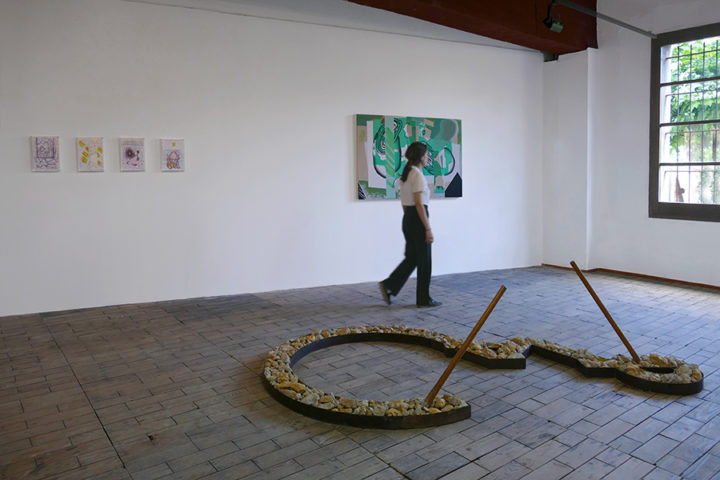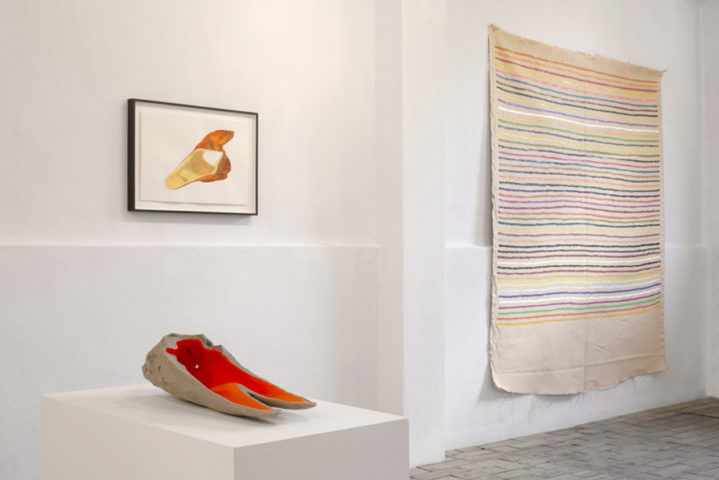Revelations on a Shapeless Sphere
Fonteta, June 17 – August 28, 2022
Pere Noguera, Luis Gordillo, Ludovica Carbotta, Muntadas, Francesco Arena, Victoria Civera, Perejaume, Pere Llobera, Ignacio Uriarte, Anna Dot, The Late Estate Broomberg & Chanarin, Jordi Mitjà, Rasmus Nilausen, Ángela de la Cruz, Lola Lasurt, Mercedes Azpilicueta, Fernando Prats
We are delighted to present again a collaborative project of galleries Bombon, Joan Prats and NoguerasBlanchard. The proposal for this season once again brings together artists from the three galleries and from different generations in an exhibition format that will be based on the exquisite corpse principle, with a text by Eduard Escoffet written for the occasion.
Focusing on this act of collective exchange, during the summer of 2022, the artists invited to participate, the first of them Pere Noguera (La Bisbal, Girona; 1941), will be in charge of selecting the first group of artists, and so on, until the end of a series of exhibition proposals made up of works spanning different generations and imaginaries.
Chapter 1: opening Saturday June 25
Pere Noguera, Luis Gordillo, Ludovica Carbotta (Room 1)
Pere Noguera, Anna Dot, The Late Estate Broomberg & Chanarin (Room 2)
Chapter 2: opening Saturday July 16
Ludovica Carbotta, Muntadas, Francesco Arena (Room 1)
The Late Estate Broomberg & Chanarin, Jordi Mitjà, Rasmus Nilausen (Room 2)
Chapter 3: opening Saturday August 6
Francesco Arena, Victoria Civera, Perejaume (Room 1)
Rasmus Nilausen, Angela de la Cruz, Lola Lasurt (Room 2)
Chapter 4: opening Thursday 18
Perejaume, Pere Llobera, Ignacio Uriarte (Room 1)
Lola Lasurt, Mercedes Azpilicueta, Fernando Prats (Room 2)
c/ Empordà, 10, Fonteta, Girona
June: Friday to Sunday, 5 – 9 pm
July and Aug: Monday to Sunday, 5 – 9 pm



